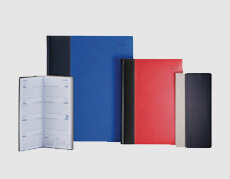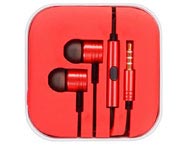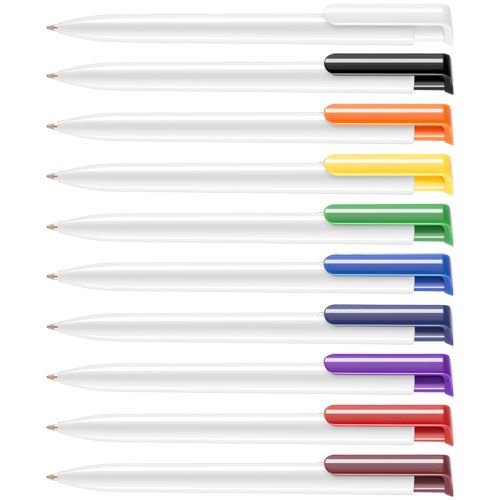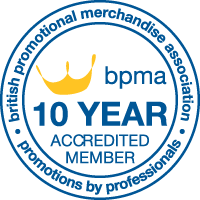PROMOTIONAL GIFTS
- Badges and Magnets
- Bags and Holdalls
- Cars and Transport
- Clocks and Watches
- Clothing
- Conference and Events
- Desk Items
- Folders
- Golf and Sport Gifts
- Health and Fitness
- House and Garden
- Keyrings
- Lanyards
- Low Cost Promotions
- Mobiles and Gadgets
- Mugs and Drinking
- Notebooks
- Paper Products
- Pens and Writing
- Personal Safety
- Stress Items
- Sweets and Drinks
- Tools
- Toys and Games
- Travel Gifts
- Umbrellas
- USB Memory Sticks
- Education and Schools
- NHS Campaigns
- Summer Theme
- Winter Theme
- Paper
- Home
- Print Tutorials
UV Printing
Uses special Ultra Violet curing inks that can be printed in high resolution and full colour onto a large range of promotional items. The printer will place the ink on the material and a UV light acting as a catalyst will follow behind to cure the ink so that it drys hard instantly - speeding up the production process.
Screen Printing
Silk screen printing was first used when the mesh or screen was made of natural silk. Nowadays screen mesh is either made from polyester, stainless steel or nylon. The basic items of equipment required to carry out screen printing are:
STENCIL: This consists of a frame onto which a mesh is attached under tension. The mesh is coated or covered with a photosensitive material. The image to be printed is created photographically on the stencil leaving open areas of mesh through which ink passes. The stencil is also known as “the screen”.
SQUEEGEE: A flexible polyurethane blade (sometimes rubber) held in a rigid mount or handle.
INK: Can take the form of a wide range of solids or dyes suspended in a fluid.
SUBSTRATE: This is a general term for the surface that is to be printed, such as a polo shirt.
MACHINE BASE: The base provides a surface for the substrate to be printed against and the upper section secures the screen.
Function of the Squeegee
In conventional screen-printing the squeegee carries out two functions. It deflects the stencil and brings it into contact with the substrate. The squeegee is held at an angle of typically 75 degrees to the horizontal.
During the printing action the squeegee is moved across the stencil, creating a pressure wave in the ink. The actual point of flow is where the leading edge of the squeegee is in contact with the stencil. This is known as the “Flow Point.”
Applications for Screen Printing. What makes screen printing so popular is the ability to lay down a film of a wide range of materials on a vast range of substrates.
Pad Printing
An "indirect offset gravure" printing process directly related to a process invented several hundred years ago in Europe. The main elements of the pad printing process are:
* Printing plate
* The ink
* Silicone rubber printing pad
* Doctor blade or ink cup
* Machine
The image to be printed is created on the printing plate, normally produced by chemical etching. The plate is generally steel or a nylon photopolymer material.
Pad printing inks contain solvents. When the ink is contained within the etched image area the evaporation of solvents causes the surface of the ink to become tacky. The shape of the pad is such that when it compresses on the plate the printing surface of the pad rolls across the plate. As it does so it comes into contact with the tacky surface of the ink. The ink sticks to the pad, as the pad lifts the printing surface rolls away from the plate and lifts up ink from the etching.
Whilst the pad moves towards the object to be printed the solvent continues to evaporate from the ink on the pad and the outside surface of the ink becomes tacky.
As the pad makes contact with the object and compresses, the print surface of the pad rolls across the object and the tacky surface of the ink attaches itself to the surface of the object. The pad then lifts and the printing surface of the pad rolls away from the surface of the object and releases the ink leaving it laying on the surface. Whilst this is happening the etched portion of the plate is recharged with ink, and the pad returns to pick up another image from the plate. A whole range of variables will affect pad printing. Etch depth, ink condition, ambient conditions, pad shape, surface finish, hardness and machine speed are the key factors.
Laser Engraving
With this method the lasers are used to engrave, etch or mark an object. The technique utilises a computerised system to drive the movements of the laser head. Very precise and clean engravings can be achieved at a high rate. It is this level of detail that makes it ideal for creating a high quality, cost effective means of personalising a wide variety of materials in particular metal, glass and wood. The laser engraving technique does not involve tool bits coming into contact with the surface of the product being engraved. This means laser engraving is at a distinct advantage over alternative engraving, and less modern technologies, where bit heads have to be replaced regularly.
Embroidery
This is the application of embroidering a logo or design onto clothing, caps or bags using computerised embroidery machines. There are two main parts to this process. The first part is ‘Digitizing’ which is when the logo is turned into stitches by physically tracing the design and creating the various types of stitches on a computer programme which will recreate the design. The digitizer will decide the best way for the design to be sewn onto the fabric, and will make decisions according to the fabric type and design size. Once the design has been digitized a disk is made which controls the embroidery machines. Now the design is ready for part two. This is the sewing process; firstly the disk is sampled on a loose piece of fabric to ensure that the quality is good and that there are no errors in the digitizing. Once the sample has been approved production can commence.
Some designs may need to be modified before they can be embroidered successfully. Small text below 4-5mm may need enlarging slightly and designs with very fine detail may require editing in order to achieve the best overall look.
Digital Transfer
A digital transfer is a way of producing full colour designs, which are too complex to be screen printed, for application onto garments, caps or bags via a heat process.The required image is printed onto white transfer paper. This is then cut out with a plotter, which is a machine that cuts through paper following an outline drawn in Adobe Illustrator. The transfer paper is then placed onto the object. The correct amount of heat and pressure is then applied. This is a precise process which ensures there is no damage to the surface of the product. The image then adheres permanently to the object.
Foil Blocking
In this mono process, a metal blocking die or plate is produced from the artwork. It is placed in the blocking machine and is heated. The product is below, held in a jig. Between the two is a 'foil' running from one reel to another. When the hot block is put, under pressure, against the product with the foil in between, the part of the block in contact with the product is the raised part on which the image appears. The result of this process is that the foil attaches itself to the product in the form of your image. Foils can be of a selection of colours, but gold and silver are the most often used. The result is a really shiny gold or silver image. Tints cannot be used, or very fine details shown.









